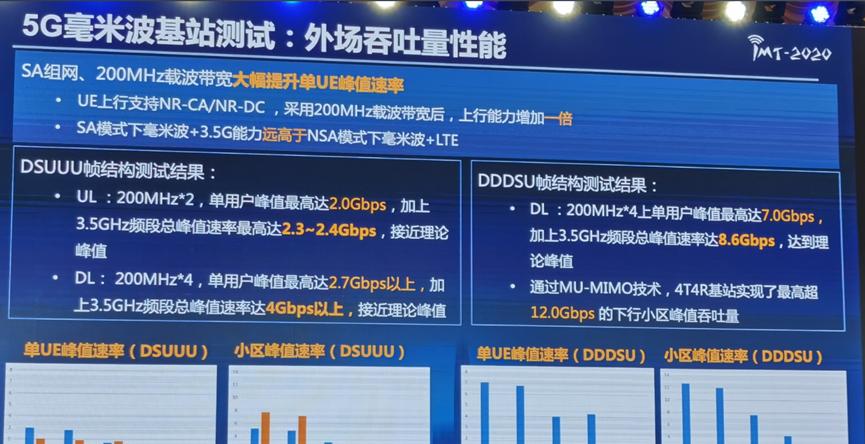Recently, under the guidance of the IMT-2020 (5G) Promotion Group of the Chinese Academy of Information and Communications Technology, Huawei completed all the functions and field performance test projects of the 5G millimeter wave base station, and the downward peak rate of the user under the DDDSU frame structure exceeded the amazing 7Gbps! In the functional test, Huawei completed a number of test items such as single-carrier 200MHz large bandwidth under SA independent networking, flexible frame structure of DDDSU and DSUUU, CA carrier aggregation in the millimeter wave downstream 4×200MHz and uplink 2×200MHz frequency bands, and high and low frequency NR-CA in the millimeter wave and 3.5GHz bands.

The large bandwidth of 200MHz per carrier greatly increases the UE peak rate and maximizes the benefits of millimeter wave.
As early as September 2020, domestic operators, mainstream equipment manufacturers, and terminal manufacturers reached an agreement on millimeter wave single-carrier bandwidth application standards, requiring base stations and terminals to support 200MHz carrier bandwidth.
High and low frequency NR-CA can simultaneously play the advantages of large millimeter wave bandwidth and good coverage of 3.5GHz, which can ensure a continuous and high-speed 4G experience, which is the mainstream technology direction of 5G high-low frequency coordination.
On the one hand, it is closer to the signal processing of the RF side, and can sense the signal fluctuations in time, so that the base station can better do shunting and scheduling, and improve transmission efficiency.
On the other hand, it can support both NSA and SA networking architectures, and the network architecture and evolution are very flexible.
Moreover, considering that the basis of CA technology has been adopted between the various frequency bands of Sub 6GHz, the high and low frequency NR-CA is conducive to the unification of architecture and shunt points, enabling the evolution of full-band 5G networking.
Huawei and industry partners have completed the world's first 5G high-low frequency NR-CA test, taking a solid step for the future large-scale commercial use of millimeter wave.
In the field throughput performance test, the DDDSU frame structure is adopted, and the single-user peak rate of the 4×200MHz millimeter wave band is greater than 7Gbps, plus the total peak rate of the 3.5GHz band is 8.6Gbps, reaching the theoretical peak.
Through MU-MIMO technology, the cell downlink peak rate of 4T4R base stations is greater than 12Gbps.
Using the DSUU frame structure, the 4×200MHz millimeter wave band single-user downlink peak rate exceeds 2.7Gbps, plus the total peak rate of the 3.5GHz band exceeds 4Gbps, close to the theoretical peak.
2× the peak rate of a single user in the 200MHz band reaches 2Gbps, plus the total peak rate of the 3.5GHz band is 2.3-2.4Gbps, and the peak rate of cell uplink is greater than 7.5Gbps.